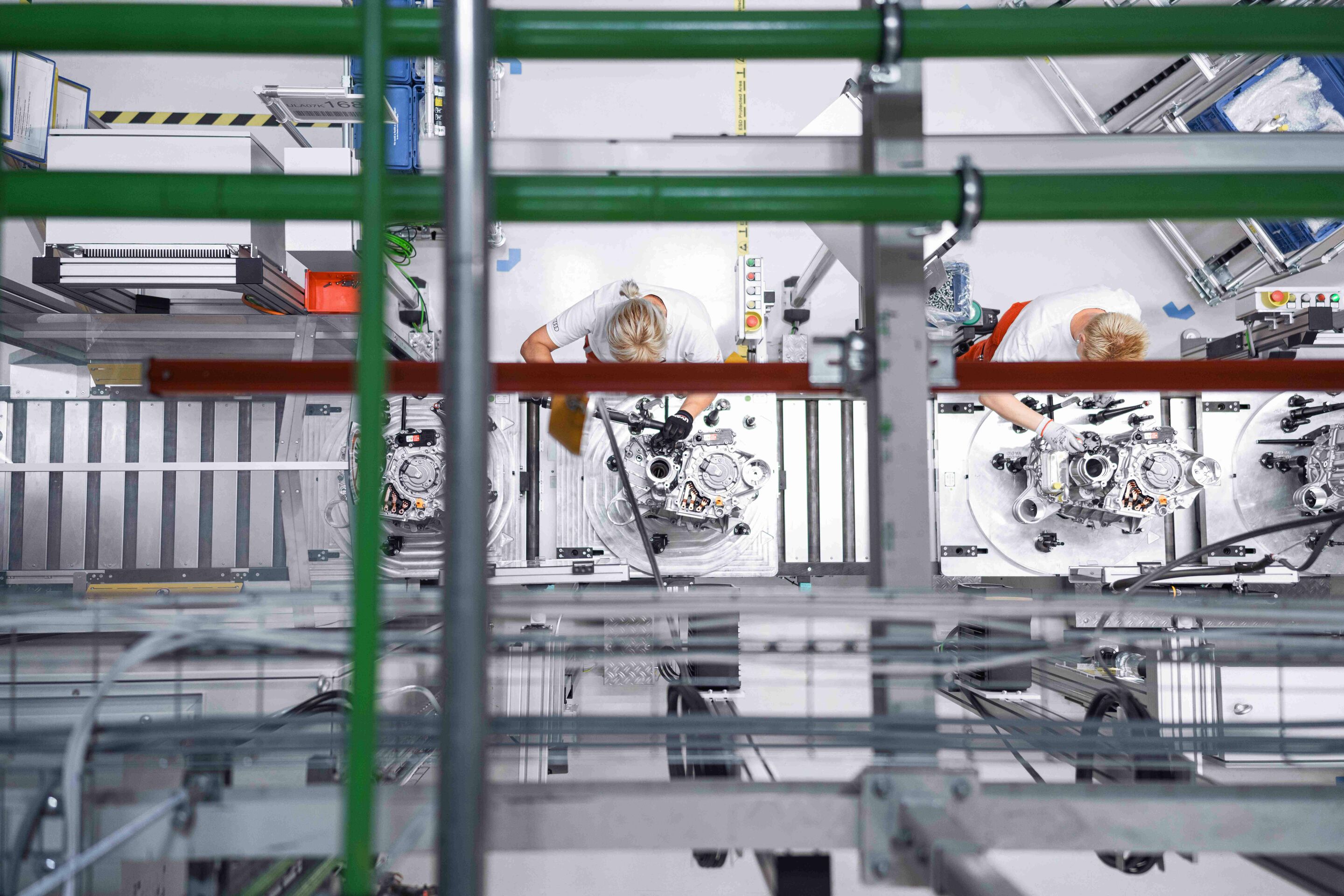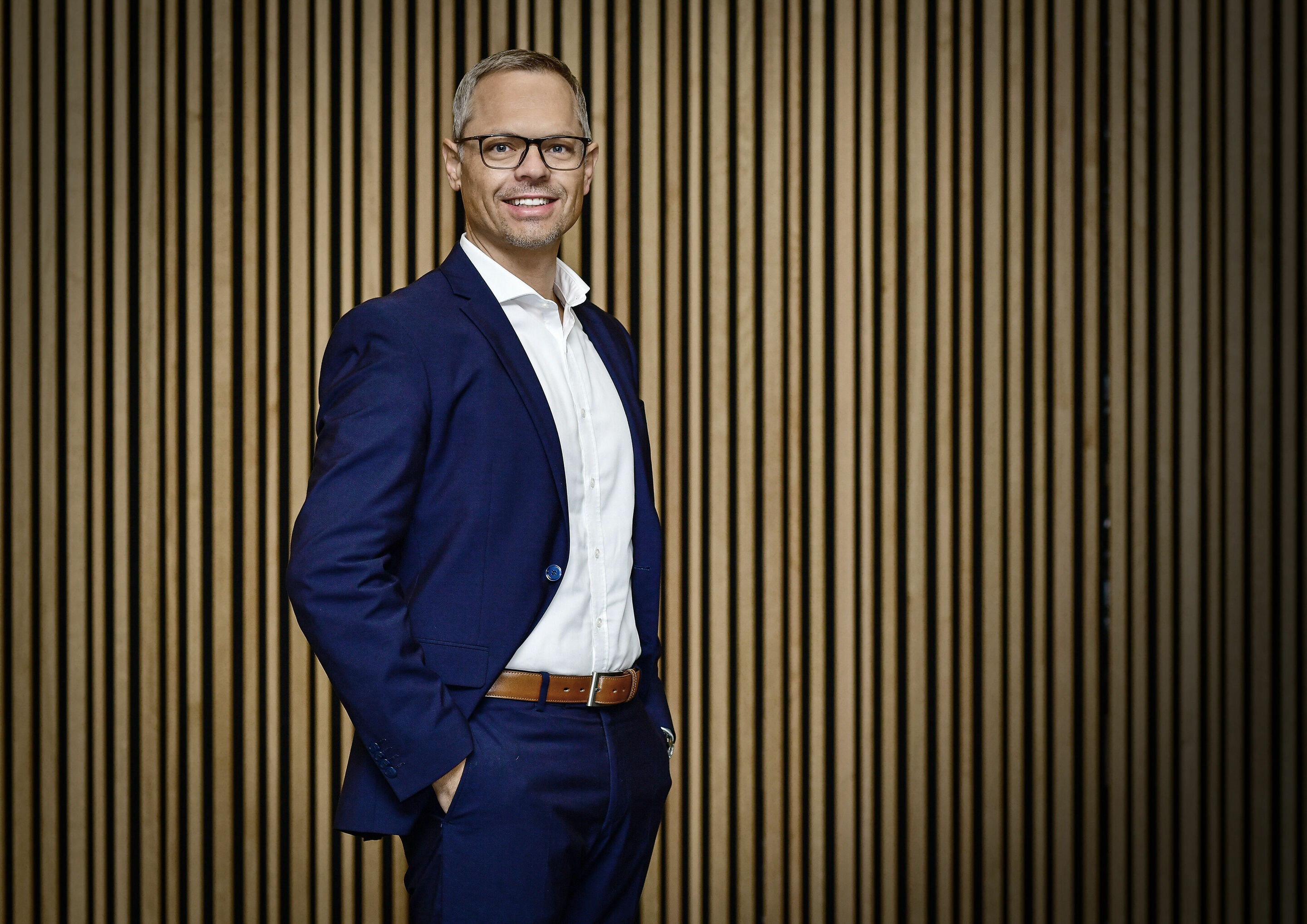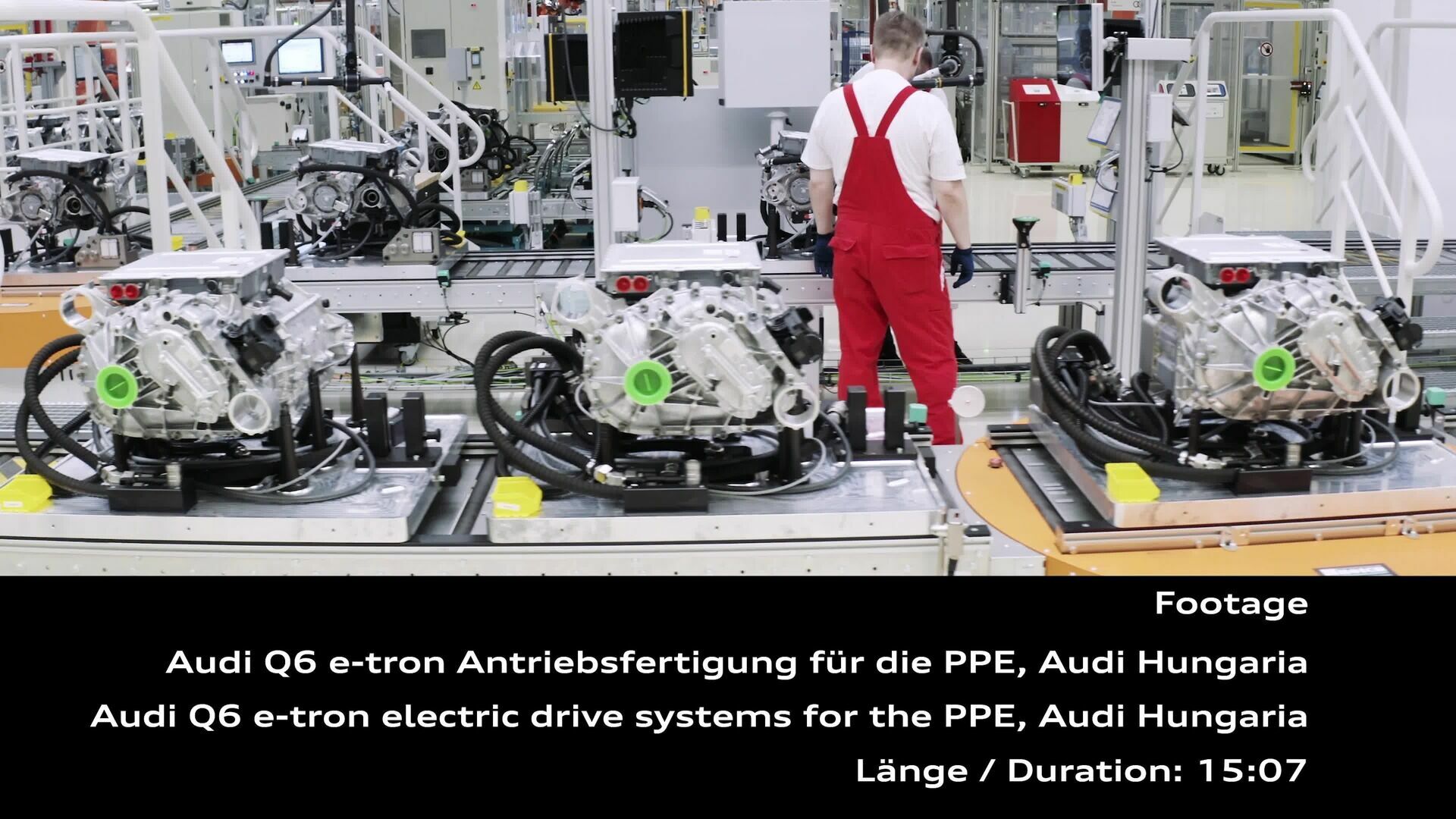Cross-site Collaboration for the Audi Q6 e-tron
The manufacture of the Audi Q6 e-tron series is a collaboration across locations. The electrically powered SUV marks the first time the brand with the four rings has produced an all-electric Audi model at its headquarters in Ingolstadt. Audi is building the electric motors for the premiere Premium Platform Electric (PPE) model in Győr, Hungary. In this interview, Siegfried Schmidtner, plant manager in Ingolstadt, and Alfons Dintner, Chairman of the Board of Management of Audi Hungaria, discuss the collaboration between the two sites, the mood among employees in the light of the company’s ongoing transformation, and the future prospects for Ingolstadt and Győr.
Mr. Schmidtner, what’s the attitude of the workforce in Ingolstadt toward the upcoming shift to electric mobility?
Siegfried Schmidtner: Our employees are key to the transformation; I observe daily that they are incredibly positive and motivated by the shift. There is a palpable sense of optimism. We’ve been working hard to prepare for the transformation to electric mobility – so we’re ready to get going. Electric mobility represents a tremendous opportunity for Ingolstadt. We will be the pioneer for the Premium Platform Electric and the new E3 electronics architecture. We’re proud to play a vital role in shaping the company’s transformation.
What challenges do Győr and Ingolstadt face in view of the impending changes?
Alfons Dintner: Győr has been manufacturing for 30 years. The site has successfully handled numerous model launches, so it is prepared for the transformation, the changeover, and the zeitgeist. The people who work here have been with the company for a long time and are therefore very experienced. In addition, Audi Hungaria doesn’t only build engines but also entire vehicles. It has its own technical development department, in-house toolmaking shop and offers services to the whole Volkswagen Group. As a result, we have a unique responsibility within the Group because there is no other site that can provide such a broad range of services. This means transformation is nothing new for us. We have been developing, building, testing, and servicing electric drive systems since 2018. Our contribution to PPE, i.e., manufacturing perfect electric drive systems for Ingolstadt and our other Group customers, is a significant responsibility for us and, therefore, also an equally significant challenge.
Siegfried Schmidtner: The challenge we face together is clearly to achieve perfect collaboration between all the trades and locations involved. This is something we’ve been proving we can do for a very long time. Nevertheless, a new ramp-up is always exciting, and I see it as motivation for us to take each other to the next level and push ourselves to become even better. The transformation of the company is bringing us even closer together. Both sites have embarked on an all-encompassing transformation journey, from combustion engines to electric motors in Győr and here in Ingolstadt, from the complete vehicle with a combustion engine toward electric mobility – and everything that goes with it, such as the newly built battery assembly.
How and how often do you engage in dialogue with employees? What wishes, worries, and hopes have they communicated to you?
Siegfried Schmidtner: As a native of Ingolstadt, I grew up with Audi. I use every free minute to be on the production line and to chat with my employees. I also know many of them personally. An open dialogue with the team is extremely important to me. As a plant manager, you need to have a sense of what the current mood is and what concerns the workforce has. Naturally, the employees are wondering what the future of the site will look like in concrete terms and how much of it will be utilized. As for the upcoming ramp-up, we will meet the challenge together and prove that we are a really strong team. We’re approaching this task with dedication and passion.
Alfons Dintner: When we think ahead, we get our employees involved. We don’t work in an ivory tower. This also happens with the people on the line. A certain amount of skepticism can, of course, be felt in the workforce. After all, an electric motor has significantly fewer parts than an internal combustion engine. In addition, we keep hearing claims that we’ll need fewer employees for electric mobility. These are sentiments that don’t necessarily help us. But we have moved beyond this point because experience shows that production scopes don’t decrease but often shift. For example, our performance models don’t just need a single electric motor but, on average, more than two motors for the rear axle and front axle. After all, we have been successfully building electric motors since 2018. There is, of course, a degree of uncertainty in the face of change because people will sometimes find themselves working in a different role at Audi Hungaria. But we have always had employees moving from engine production to vehicle construction and vice versa. Our entire team is extremely flexible in this respect. That’s why transformation for us doesn’t necessarily involve fears. It’s a process that we can handle well.
Can you explain the specifics of the collaboration with the respective other location?
Siegfried Schmidtner: As I see it, there are two levels of collaboration. There’s a strategic exchange between the plant managers, for example, about what we can learn from each other or where we can initiate projects together. In addition, there’s the technical exchange, i.e., working groups in which we work together on subject-specific and technical topics. Győr and Ingolstadt are bound together by a long-standing tradition of extremely close collaboration, which has now lasted 30 years. I spent two years in Győr myself. People know each other; they trust each other. Our collaboration has an extremely strong foundation, and we are constantly developing it further. And that’s extremely important when it comes to driving the completely new vehicle platform with our Q6 e-tron across the proverbial finish line. The electric drive system and power electronics are vital components of this vehicle project.
Alfons Dintner: The exchange with Ingolstadt – for example, on the subject of motors – is conducted extensively between Technical Development, Quality Assurance, and the field ramp-up team. Our analysis and preproduction center also regularly receives partially equipped vehicle bodies from Ingolstadt, which we process at our facility. In other words, the collaboration works wonderfully. We have already approached 44 employees who want to accompany the ramp-up support in Ingolstadt for one year. Supporting each other is standard practice. Everyone in our production network is open to this.
Mr. Schmidtner, what signs do you think the expansion of jobs in Ingolstadt sends out?
Siegfried Schmidtner: It’s been a long time since we have hired so many new employees – 500 in all, and that’s in production alone. This is immensely beneficial for the city of Ingolstadt and for the entire region. To me, this is more than just a commitment to the location. It is job security in times of upheaval. Showing a greater commitment to the location isn’t possible – even for those who already work at Audi. At the same time, the innovative E3 architecture opens up new fields of activity. We need more electronics expertise, for example. We are elevating ourselves to the next level of vehicle engineering with significantly different technologies. We are getting much more heavily involved in the topics of connectivity, digitalization, and automation.
That’s a perfect segue to the topic of the 360factory, Audi’s vision of the future of production – how far along are the sites in terms of the goals of profitability, sustainability, flexibility, and attractiveness?
Alfons Dintner: Győr is an outstanding location. But 360factory also means manufacturing much more productively. In this respect, every site must overcome the same challenges. We are well positioned. We have opportunities during the transformation to utilize our employees according to their abilities. In terms of productivity, carbon neutrality, and quality, we are already doing very well. We were named “Best Employer in Hungary” for the ninth time this year. This underscores the fact that we’re a highly attractive employer. At Audi Hungaria, we’ve found a good balance between keeping people with the company and attracting talent at the same time.
Siegfried Schmidtner: As the Group’s headquarters, Ingolstadt will always play a pioneering role. Our aspirations are high. We want to be the most attractive automotive factory in the world. To this end, we have identified ten strategic areas we are working on very specifically. In this process, we are taking our people along with us and not simply imposing a strategy from above. I place much more emphasis on participation – after all, a strategy is only effective if it is brought to life - if implemented, and if people get actively involved. The factory is prepared, and we have amazing products. We’re all chomping at the bit and can’t wait to get the Q6 e-tron series on the road. Production of the new model started in December, and we are now gradually ramping up production.
Short biographies
Siegfried Schmidtner was born in Ingolstadt in 1971. After graduating from high school and university, he joined Audi in 1998 in engine and chassis planning. After holding further positions, he took over responsibility in 2017 as project manager in the Production division for planning and managing production activities for Premium Platform Electric vehicle and platform projects as well as the Audi A4, A5, and Q5, including plug-in hybrids, in the Production division. From 2018, he oversaw key functions in the Audi Production division, focusing on production strategy, digitalization, and transformation. In 2019, he took over management of the newly created “Product Engineering” division at the interface between production and technical development. Schmidtner has been the plant manager at the Ingolstadt site since December 2022. In this role, he is responsible for all manufacturing-related areas and site-specific issues.
Alfons Dintner was born in Kösching in Bavaria in 1963. He joined Audi in Ingolstadt in 1987 after completing his vocational training with Audi and studying in Munich. In 1998, Dintner took over the management of the Audi TT and individual paint shop. In 2001, he became the overall manager of the paint shop at the Ingolstadt plant. In addition to his work for Audi, he assumed various planning, consulting, and management roles within the Volkswagen Group during this time, including at SEAT, Volkswagen South Africa, Bentley, Lamborghini, and FAW-Volkswagen. As a Board Member for Production and Logistics, Dintner followed the call of Volkswagen de México in 2011, taking responsibility for the development and ramping up of the Volkswagen aggregate site in Silao. As CEO of Audi México, he then assumed overall responsibility for the development and ramp-up of the Audi site in San Jose Chiapa, Mexico. Alfons Dintner has been Chairman of the Board of Management of Audi Hungaria since October 2019.





